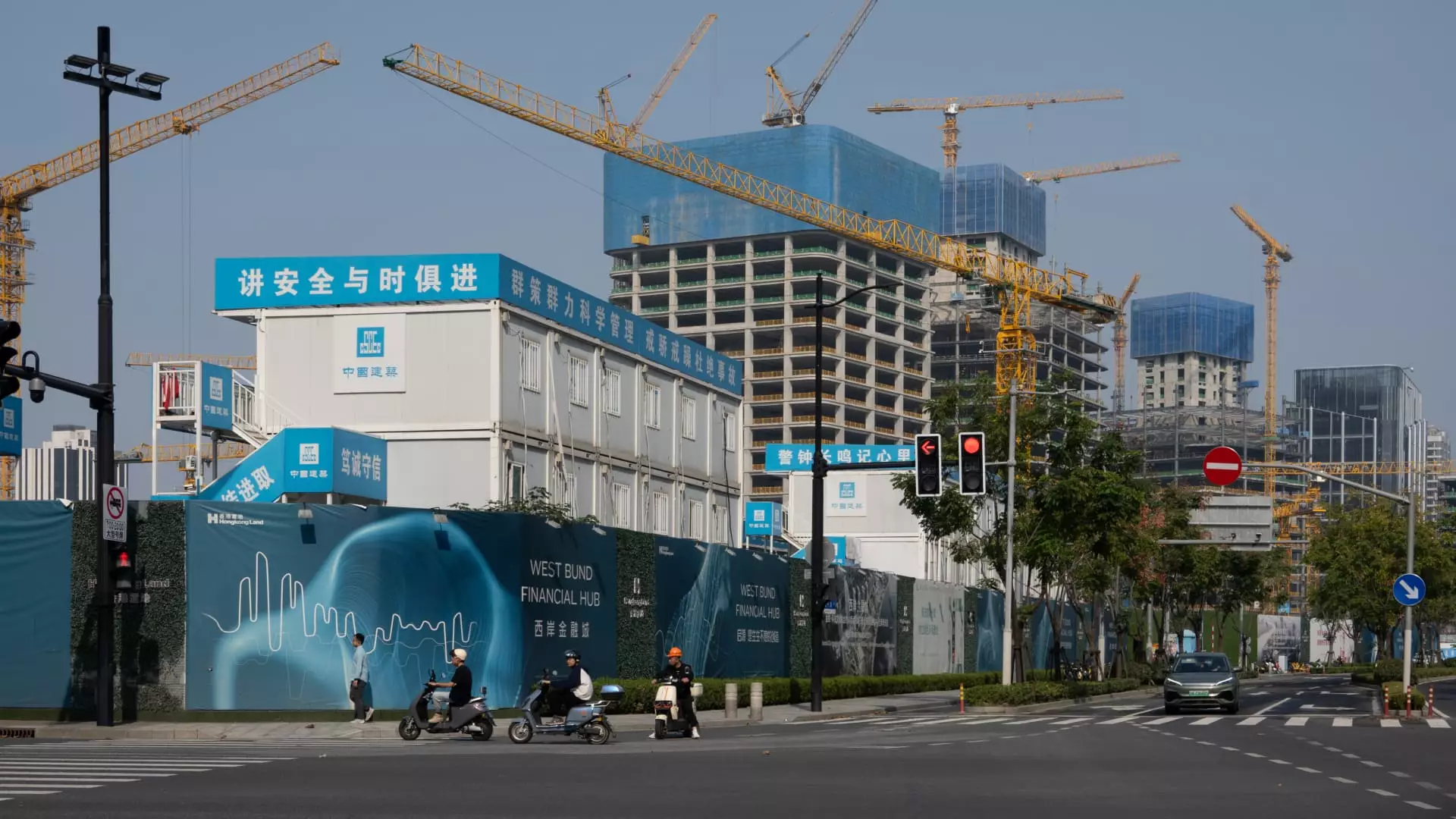As China braces for the release of key economic indicators this Friday, analysts and investors alike are eager to dissect retail sales, industrial production, and fixed-asset investment data for the month of October. The National Bureau of Statistics is expected to reveal a year-on-year increase of 3.8% in retail sales, a moderate rise from September’s 3.2%. Such growth signals a flicker of optimism in the consumer sector, though it remains critical to note that this still trails pre-pandemic levels, highlighting the ongoing recovery challenges.
Industrial production is anticipated to increase by 5.6%, a slight uptick from September’s 5.4%. This growth is indicative of a resilient manufacturing sector, which, upon closer examination, reflects a complex interplay of global demand and domestic supply chain issues. Furthermore, fixed-asset investment is projected to grow by 3.5% on a year-to-date basis, an improvement from 3.4% in the previous month. While these figures suggest a positive trend, the underlying issues within the construction and infrastructure sectors warrant careful scrutiny.
Government Intervention and Market Sentiment
In response to economic pressures, Chinese authorities have ramped up stimulus measures since late September, aiming to reinvigorate the economy. The central bank has implemented interest rate cuts and extended support for the beleaguered real estate sector. Additionally, the Ministry of Finance recently announced a staggering 10 trillion yuan (approximately $1.4 trillion) initiative to tackle local government debt, with hints that further fiscal support may be forthcoming in the next year.
While these efforts have led to an upswing in stock market performance, their efficacy in translating into tangible consumer confidence remains uncertain. Surveys reflecting manufacturing activity suggest a resurgence; however, a detailed analysis of the nature of demand—both domestic and international—is essential to fully understand the implications of these policies.
Consumer Behavior and Broader Economic Trends
The dynamics of consumer spending reveal a cautious narrative. The recent Golden Week holiday underscored this trend, showcasing consumer hesitance amid economic uncertainties. Despite this, the Singles Day shopping festival reported sales that exceeded initially low expectations, hinting at a potential rebound in consumer sentiment. However, it is pivotal to recognize that the stimulus measures thus far have not specifically targeted consumer spending, which could impede a broader economic recovery.
Moreover, while China’s gross domestic product (GDP) grew by 4.8% during the first three quarters of the year, it falls short of the government’s target of around 5% growth for the year. This data reflects the fragile state of recovery, illustrating the tension between aiming for stability and grappling with structural economic challenges.
As we await the official data, it is clear that China’s economic landscape is fraught with both opportunities and challenges. While there are promising signs of recovery through increased production and investment, structural issues and consumer restraint underline a more complex reality. The upcoming data will be pivotal in understanding the trajectory of China’s economy and how effectively the government’s stimulus measures are meeting their objectives. Observers will need to remain vigilant as these indicators unfold, particularly in light of global economic conditions and domestic consumer confidence.

